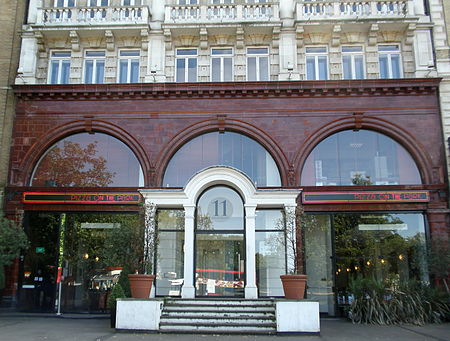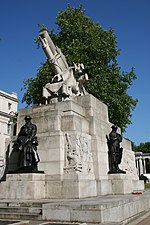Hyde Park Corner tube station
Buildings and structures on PiccadillyFormer Great Northern, Piccadilly and Brompton Railway stationsHyde Park, LondonLeslie Green railway stationsLondon Underground Night Tube stations ... and 5 more
Piccadilly line stationsRail transport stations in London fare zone 1Railway stations in Great Britain opened in 1906Tube stations in the City of WestminsterUse British English from August 2012

Hyde Park Corner is a London Underground station near Hyde Park Corner in Hyde Park. It is in Travelcard Zone 1, between Knightsbridge and Green Park on the Piccadilly line.
Excerpt from the Wikipedia article Hyde Park Corner tube station (License: CC BY-SA 3.0, Authors, Images).Hyde Park Corner tube station
Am Bach, GVV Müllheim-Badenweiler
Geographical coordinates (GPS) Address Nearby Places Show on map
Geographical coordinates (GPS)
| Latitude | Longitude |
|---|---|
| N 51.502777777778 ° | E -0.15277777777778 ° |
Address
Dattingen
Am Bach
79379 GVV Müllheim-Badenweiler (Dattingen)
Baden-Württemberg, Deutschland
Open on Google Maps











